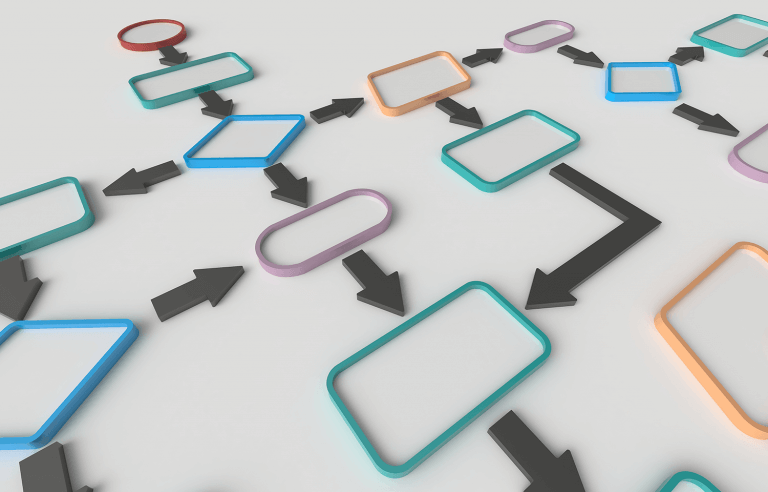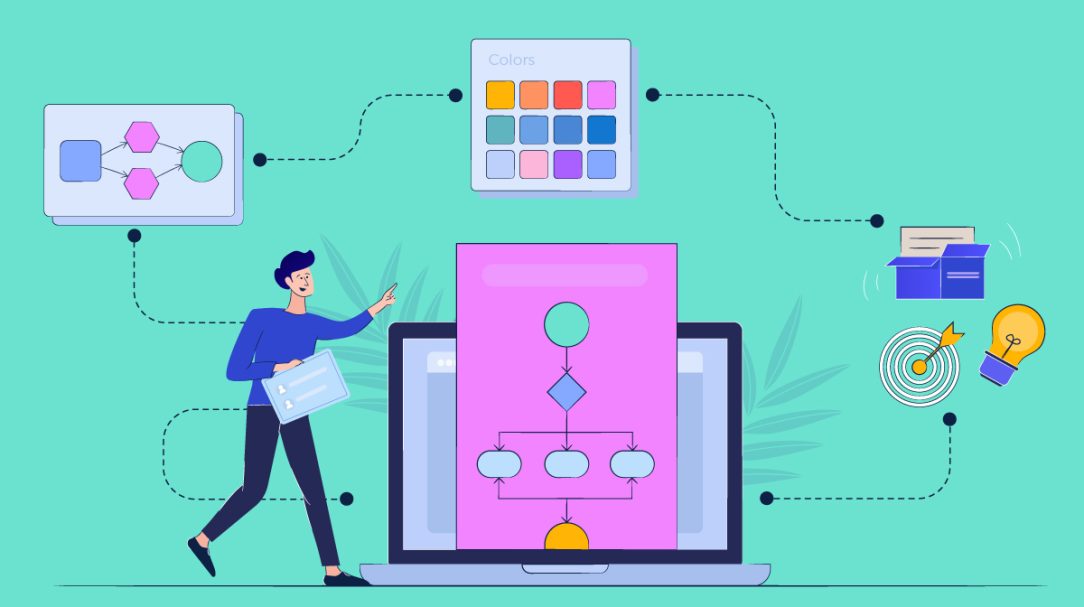As someone who wants to be more efficient and effective in your work, you probably know that flowcharts are a powerful tool to help you organize your workflow.
But what you may not know is that they can do so much more. For example, they can help you solve complex problems rather quickly. Don’t believe us? Here are nine ways in which flowcharts can help you do so!
They Help You To Understand Complex Problems Quickly And Easily

Source: towardsdatascience.com
When you see a problem represented in diagram form, it’s easy to understand the different parts and how they connect. This makes it much easier to understand complex problems and find solutions fast.
For example, let’s say you’re trying to figure out a way to improve your company’s workflow. By using a flowchart, you can quickly and easily map out the process and see where there are potential bottlenecks. You can then work on fixing these problems to improve the flow of the process.
They Help You To Identify The Steps Involved In Solving A Problem
By seeing the steps involved in solving a problem, you can determine what order to approach them, as well as identify any potential roadblocks. This can save you a lot of time and energy in the long run.
For example, let’s say you’re trying to plan a marketing campaign. By creating a flowchart of the steps involved, you can quickly see what needs to be done and in what order. This will help you to create a more efficient and effective campaign plan.
They Help You To Visually See The Relationships Between Different Elements

Source: justinmind.com
Flowcharts help you to see the relationships between different elements in a problem. This can help find solutions that take into account all of the different variables involved.
For example, let’s say you’re trying to improve your website’s design. By creating a flowchart of the different elements on the page and how they relate to each other, you can quickly see where there are potential problems. You can then work on redesigning the page to improve the user experience.
They Help You To Find And Fix Errors In Your Thinking Process
When you’re trying to solve a problem or come up with a plan, it’s easy to overlook the mistakes in your thinking – critical or analytic. However, by using a flowchart from deccanherald.com, you can quickly find and fix these errors because they’re all mapped out. They’re super easy to spot.
For example, let’s say you’re trying to figure out how to solve a particular issue. By mapping out the thinking process in a flowchart, you can quickly see where there are potential errors that are stopping you from solving the issue at hand.
5. They Help You To Plan And Organise Your Work More Effectively

Source: microsoft.com
When you use a flowchart, you can see all of the steps involved in a process and plan your work more effectively. This can help you to avoid potential problems, as well as improve your efficiency and productivity.
For example, let’s say you’re trying to come up with a project management plan. By mapping out the steps in a flowchart, you can quickly see what needs to be done, who needs to do it, and in what order. This will help you to manage any team and/or project, no matter how complex it is.
6. They Help You To Communicate Complex Ideas More Clearly
Flowcharts are a great way to communicate complex ideas more clearly. When you map out a problem or process in a flowchart, it’s much easier for others to understand if they just look at it. This can be helpful in team projects or when you’re trying to explain something to someone who doesn’t have much experience with the topic.
For example, let’s say you’re trying to explain how your company’s product works. By creating a flowchart of the process, you can quickly and easily communicate this to others. They’ll be able to understand it much better than if you were just to try and explain it verbally.
7. They Help You To Make Better Decisions, Faster

Source: visme.co
When you’re trying to make a decision, it can be helpful to map out the different options in a flowchart. This will help you to see all of the potential outcomes of each option and make a more informed decision.
For example, let’s say you’re trying to decide whether or not to launch a new product. By mapping out the different options and potential outcomes, you can quickly see which option is the best for your business by comparing the pros against the cons. This will help you to make a faster and more informed decision.
They Show You How To Solve Problems In A Step-By-Step Manner
Complex issues are best solved in a step-by-step manner, which is why flowcharts excel at this. They can be helpful when you’re stuck on a particular problem and don’t know how to move forward. By following the steps in a flowchart, you can quickly find a solution.
For example, let’s say you’re trying to figure out how to fix a particular issue in your books. By following the steps in a flowchart, you can quickly find a solution that takes into account all of the different variables, numbers, accounts and whatever else it might be that is slowing you down.
They Allow Others To Understand Your Thinking Process

Source: microsoft.com
When you use a flowchart, you’re essentially mapping out your thought process. This can be helpful for others to understand how you think and solve problems. It also allows them to give feedback on your thinking process, which can help you to improve it and get everyone on the same page – working towards a common goal.
For example, let’s say you’re working on a project with a team. By mapping out your thought process in a flowchart, you can quickly show them how you’re thinking about the problem and what your proposed solution is. Simple, isn’t it?
Conclusion
Flowcharts are an incredibly useful tool for solving complex problems quickly and easily. By identifying the steps involved in a problem and seeing how different parts of the problem are connected, you can spot errors in your thinking process and plan your work more effectively.
What’s more, flowcharts can help you communicate complex ideas more clearly to others, and make better decisions faster as you solve a problem. So next time you’re facing a complex issue, don’t hesitate to start drawing a flowchart!




